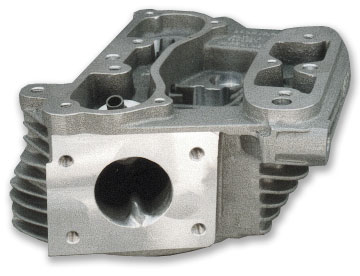![]()
RSR Inlet Valve Mach Index Calculator

Typical Values:
Harley Stock Evo Big Twin: Piston Diam 3.498; Valve Diam 1.840; RPM 5200; Stroke 4.250;
Harley Stock Twin Cam 88: Piston Diam 3.75; Valve Diam 1.840; RPM 5200; Stroke 4.000;
ORCA 113/126/132/139": Piston Diam 113: 4.000; 126/139: 4.375; 132: 4.250; Inlet Valve Diam 113: 2.200; 126/132/139: 2.220; RPM 6500; Stroke 113: 4.500; 126: 4.1875; 132/139: 4.625;
Mean Valve Flow Coefficient: There is a poor correlation between piston bore diameter, piston velocity and the area of the valve opening. Many years ago experimental testing on a wide variety of engines was undertaken to come up with a flow coefficient at various lifts and crankshaft angles.These correction factors gave better predictions of the actual Mach Index. For simplicity sake use .336 for one inlet valve and .490 for two inlet valves. You will quickly see Harley engines are not high rpm designs. You can, however, plan your engine setup around the Mach and rpm numbers you desire.
Valve Sizes and Valve Lifts: Increasing valve size and lifts has the effect of lowering the Mach Index. It all gets too complex for a simple calculator.We left valve lifts out of the equation.